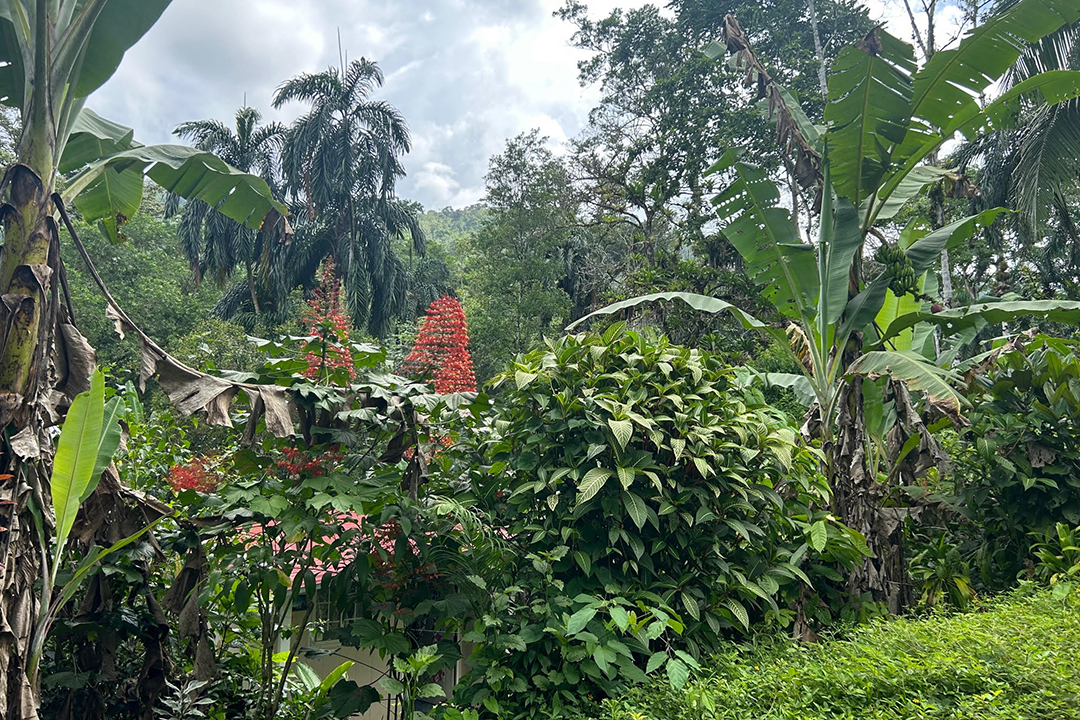By Jessica Bridgers, World Federation for Animals, and Amelia Linn, Mercy For Animals
With just under six years remaining to implement the 2030 Agenda for Sustainable Development, the Sustainable Development Goals Report 2024 paints a stark picture of progress so far, finding that only “17 per cent of the SDG targets are on track, nearly half are showing minimal or moderate progress, and progress on over one third has stalled or even regressed.”
Yet a deeper dive into the report illuminates opportunity, as achieving even one SDG can bolster progress on several others. This is especially clear when looking at the nexus between food (SDG 2), climate (SDG 13), and biodiversity (SDGs 14 and 15).
For instance, climate change impacts hinder food security, food security is identified as a contributing factor to deforestation, and deforestation reduces our capacity to mitigate climate change. Given these complexities, policy coherence and integrated approaches that leverage SDG synergies are essential. The next round of Nationally Determined Contributions (NDCs) under the Paris Agreement on climate change provides an opportunity for countries to incorporate integrated policy solutions at the intersection of the food, climate, and biodiversity nexus, accelerating progress across multiple SDGs.
Taking a closer look at the complex connections highlighted in the SDG report, it is clear that the lack of progress on one SDG is creating a bottleneck for progress across other Goals. The report highlights that, over the past two years, climate records have been “shattered” and we have reached a new record high in global greenhouse gas (GHG) emissions. Meanwhile, it clearly states that “to achieve Goal 2, significant efforts are needed to mitigate the impacts of climate change” and cites rising global temperatures as a factor in achieving SDGs 14 and 15, particularly through diminishing marine and mountain biodiversity and ecosystems. At the same time, the report notes that “agricultural expansion drove almost 90 per cent of global deforestation” with animal agriculture as one significant driver, and that “reducing deforestation depends on improving food security.”
Further, the report notes the lack of progress towards sustainable consumption and production (SDG 12) as a barrier to progress on climate change mitigation. The report highlights the significant global emissions from food loss and waste (8-10% of global emissions per year) and the need for countries to address this better in their upcoming NDCs.
However, notably missing from the 2024 SDG report is the related issue of dietary shifts, particularly for countries with widespread overconsumption of animal-source foods. The significant mitigation potential of such dietary shifts (up to 8 GT CO2e/year) has been emphasized by the Intergovernmental Panel on Climate Change (IPCC) and in the UN Environment Programme’s (UNEP) Emissions Gap Report.
The complex web of interlinkages between climate, food security, and biodiversity demonstrates the need for integrated approaches and policy coherence. Policy solutions that advance mitigation cannot come at the expense of public health or biodiversity. For instance, the intensification of animal production often relies on the high use of antimicrobials, which contributes significantly to antimicrobial resistance and poses risks to SDG 3 (good health and well- being). To implement the SDGs by 2030, countries must prioritize policy solutions that simultaneously contribute to mitigation and food security while stemming biodiversity loss and deforestation.
Opportunities for integrated policy approaches
The upcoming round of NDCs due in 2025 provides a crucial opportunity for countries to increase climate ambition while implementing integrated approaches. The 2024 SDG report rightly notes that new NDCs must close implementation gaps and align with the 1.5ºC global temperature goal.
One widely recognized gap across previous NDCs has been the lack of integrated food system approaches covering both food production and consumption. While the majority of NDCs included measures related to agriculture production, only nine countries included food waste in their NDCs and even fewer included measures related to diets, despite recognition by the IPCC that demand-side mitigation potential (including both food waste and dietary shifts) in the food system is on par with supply-side mitigation potential. Measures to promote sustainable and healthy diets, particularly shifts towards more plant-based diets, can also have tremendous benefits for biodiversity and land use.
Looking ahead, there are a range of policy measures countries can incorporate into their NDCs to advance climate action, food security, and biodiversity. In 2022, the UN Environment Assembly (UNEA) acknowledged through resolution UNEP/EA.5/Res.1 the role animal welfare can play in addressing environmental challenges and achieving the SDGs. Policies that improve animal welfare, such as the promotion of sustainable diets and enabling food environments, shifting production practices, and protecting wildlife and ecosystems, can be key tools in achieving food security, climate, and biodiversity objectives.
For example, particularly for countries with widespread overconsumption of animal-source foods, measures within their NDCs to promote sustainable diets could include revising dietary guidelines in line with human and planetary health, realigning agricultural subsidies to support shifts towards healthy and sustainable diets, and introducing public food procurement measures to support diversified, plant-rich diets. Other integrated policy measures within NDCs could include restoring and expanding protected areas and reducing the exploitation of wildlife as a means to maintain and enhance the planet’s carbon sequestration capacity. These will help countries reach net zero emissions.
This year’s SDG report highlights significant challenges and even setbacks due to the complex relationships between the SDGs. However, with the right lens, these relationships can be seen as opportunities. Rather than implementing a range of piecemeal policies to address climate, food security, and biodiversity challenges separately, countries can utilize integrated approaches, such as those that enhance animal welfare, to address multiple challenges at once while minimizing unintended consequences and enhancing policy coherence. This year’s NDCs provide countries with a timely moment to commit to and implement such policies in support of achieving the SDGs by 2030.

